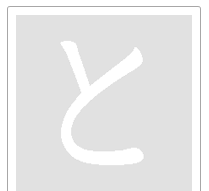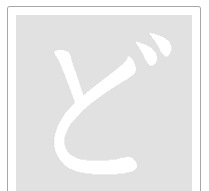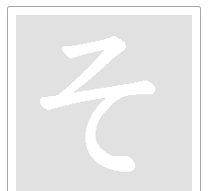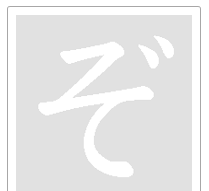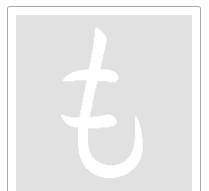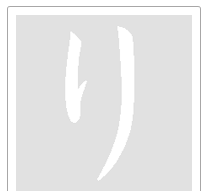 |
||||
 |
||||
Hiragana-4 |
|||||||||||||
| Examine
the next phrase: はい、どうぞ. Here,
ど
(i.e. とwith two dots) and
ぞ
(i.e. そwith two
dots) are unfamiliar. |
|||||||||||||
| と to
This is how to draw the character と. It is composed of two strokes.
と is the hiragana equivalent to ト in katakana, so it stands for the to sound. |
|
||||||||||||
| ど do
With two dots, と becomes ど, which reads do.
|
|
||||||||||||
| そ so
This is how to draw the character そ. It is composed of one continuous stroke.
そ is the hiragana equivalent to ソ in katakana, so it stands for so. |
|
||||||||||||
| ぞ zo
With two dots そ becomes ぞ, which reads zo. ぞ stands for the zo sound. どうぞ should, therefore, read douzo, but actually it is pronounced doozo, i.e. the u sound is affected by the preceding o sound. In other words, う here functions for elongation. To get どうぞ on a computer, you need to type douzo, however. Now,
write はい、どうぞ
in window
below. |
|
||||||||||||
| Look
at the next phrase: どうもありがとうございます.
Here, three characters, も, あ and り are unfamiliar to you. Practice how to write these three characters, following the video. |
|||||||||||||
| も mo
This is how to draw the character も. It is composed of three strokes.
も and モ look similar, and they indeed stand for the same mo sound. Notice that the vertical stroke in も starts from above the upper horizontal bar, while that in モ begins from just below the upper horizontal bar. Like どうぞ
is pronounced
doozo, どうも
is pronounced doomo,
う
acting as an elongation effectively. |
|
||||||||||||
| あ a
This is how to draw the character あ. It is composed of three strokes.
あ is the hiragana equivalent to ア in katakana, so it is pronounced a. |
|
||||||||||||
| り ri This is how to draw the character り. It is composed of two strokes.
り and リ also look similar, and they stand for the same ri sound indeed. They were created from the same kanji. As you may have noticed, compared with katakana which are rather straight and squarish, hiragana look generally curby and roundish. (Katakana is sometimes described as "masculine" while hiragana "feminine".) Now, you should be able to read ありがとうございます. Write どうもありがとうございます
in window
below. |
|
||||||||||||
 |
|||||||||||||
